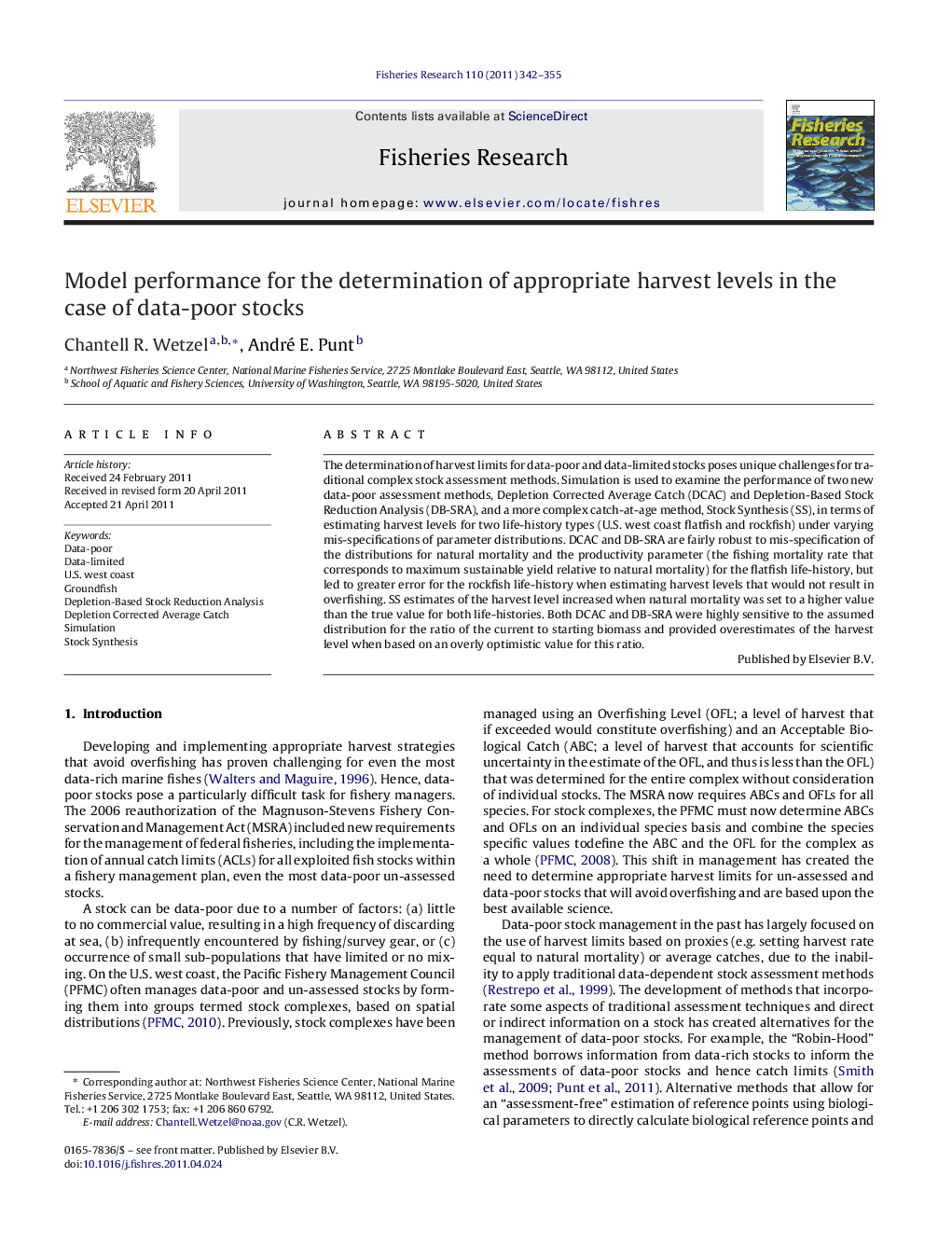| کد مقاله | کد نشریه | سال انتشار | مقاله انگلیسی | نسخه تمام متن |
|---|---|---|---|---|
| 4543611 | 1327157 | 2011 | 14 صفحه PDF | دانلود رایگان |

The determination of harvest limits for data-poor and data-limited stocks poses unique challenges for traditional complex stock assessment methods. Simulation is used to examine the performance of two new data-poor assessment methods, Depletion Corrected Average Catch (DCAC) and Depletion-Based Stock Reduction Analysis (DB-SRA), and a more complex catch-at-age method, Stock Synthesis (SS), in terms of estimating harvest levels for two life-history types (U.S. west coast flatfish and rockfish) under varying mis-specifications of parameter distributions. DCAC and DB-SRA are fairly robust to mis-specification of the distributions for natural mortality and the productivity parameter (the fishing mortality rate that corresponds to maximum sustainable yield relative to natural mortality) for the flatfish life-history, but led to greater error for the rockfish life-history when estimating harvest levels that would not result in overfishing. SS estimates of the harvest level increased when natural mortality was set to a higher value than the true value for both life-histories. Both DCAC and DB-SRA were highly sensitive to the assumed distribution for the ratio of the current to starting biomass and provided overestimates of the harvest level when based on an overly optimistic value for this ratio.
► Depletion-Corrected Average Catch (DCAC) and Depletion-Based Stock Reduction Analysis (DB-SRA) were fairly robust to biological parameter mis-specification examined for the estimate of sustainable harvest levels.
► Stock synthesis (SS) with limited data resulted in estimates of harvest that were approximately risk-neutral when the stock was at the target stock size.
► Estimates of harvest were low relative to the true harvest when the stock was below the target stock size.
► DCAC and DB-SRA were both highly sensitive to assumed distribution for the ratio of the current biomass to a starting biomass and resulted in overestimates of the harvest level when the analysis was based on an over-optimistic value for the ratio.
Journal: Fisheries Research - Volume 110, Issue 2, July 2011, Pages 342–355